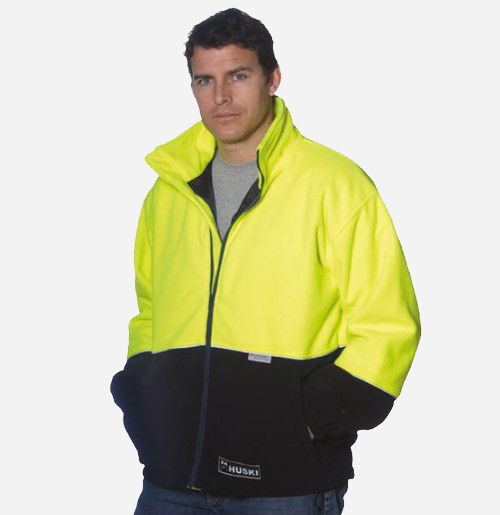Those wonderfully warm synthetic winter jackets that have taken over from winter woollies are also a primary source of damaging marine pollution.

Polar-fleece is lightweight, warm, and cheap. It’s also a marine health hazard. PHOTO Seton Australia
Along with countless millions around the world, I find a polar-fleece jacket an ideal winter garment. I’m wearing one as I write this. Cheap, soft, lightweight, flame-resistant and quick-drying, polar-fleece is of the big clothing success stories of our time.
Made from the same polyester compound as most plastic bottles, it also has green credentials: used bottles can be turned into polar-fleece.
So it was disturbing to come across a scientific finding that tiny fibres shed from polar fleece during washing pose a significant threat to life in our oceans. It’s the sort of research that often gets accused of targeting a product simply because it’s popular.
But that would be mistaken. The conclusion resulted from years of painstaking investigation of wastewater in Europe, the US and Australia, most of which finishes up up in the sea.
Plastic contamination of the ocean remains little-known to the general public, but it’s huge. A study published in the journal Science last year calculated that around eight million tonnes of plastic enters the sea every year.
In January this year the annual World Economic Forum heard that over the past 50 years production of plastics had increased over 20 times, and that plastic “leakage” to the sea was on track to double by 2030 and quadruple by 2050.
At that point, said the WEF analysis, there would be more marine plastic by weight than all the ocean’s fish.
In April the Senate environment committee received nearly 200 submissions and heard from 43 witnesses about marine plastics. Evidence included pollution by microbeads in beauty products which Tasmanian state MP Madeleine Ogilvie is seeking to have banned from sale in the state.
The committee urged government and business action to curb the amount of plastic waste and support research into its marine impact. Recycling, container deposit schemes, reduced packaging material and new fishing technologies featured in its recommendations.
A 2015 paper in Environmental Research Letters drew on ocean circulation models to work out the quantity and distribution of marine microplastic at the ocean’s surface. It found that in 2014 there was between 93,000 and 236,000 tonnes of it – many times more than previously thought.
That fits with a 2014 assessment of Australia’s busiest waterway, Sydney Harbour, that found microplastic particles in sediment approaching one in every square millimetre.
Tony Underwood and Gee Chapman pioneered a leading-edge technique at the University of Sydney to determine what tiny marine particles are made of. Their work attracted the attention of one of the key global researchers into microplastic marine pollution, Mark Anthony Browne.
Born and educated in the UK, Browne moved to Australia partly because of the world-class forensic tools available at the University of Sydney for identifying thousands of tiny fibres he’s found over many years in wastewater and 18 sites on the shorelines of six continents.
The fibres were by far the commonest form of plastic Browne recovered from the wastewater outlets. Analysis identified the main culprit: polar-fleece clothing that millions of us wear daily.
Looking at wastewater samples from domestic washing machines, the study found that one garment can produce more than 1900 fibres in a single wash. Ingested by small organisms, these particles are a pathway for toxic pollutants to enter the tissues of animals at the base of the food chain.
Ideally, a solution would come from improved laundry filtration, or a differently-formulated fabric that doesn’t shed in the wash. Browne has been the main driver of a new venture, Benign by Design, seeking corporate backing for developing environmentally-friendly products.
But the big clothing manufacturers have avoided committing to Browne’s initiative, claiming the evidence doesn’t justify the money and effort. We need to find a counter to the potent economics of supply and demand.
The marine environment is under increasing stress, and continuing to ignore this thoroughly-researched problem will just make the situation worse.
In the absence of cheap options I’m reluctant to give up my polar-fleece jackets, but now I’m going to start looking. I’ll let you know if I find a suitable alternative.
